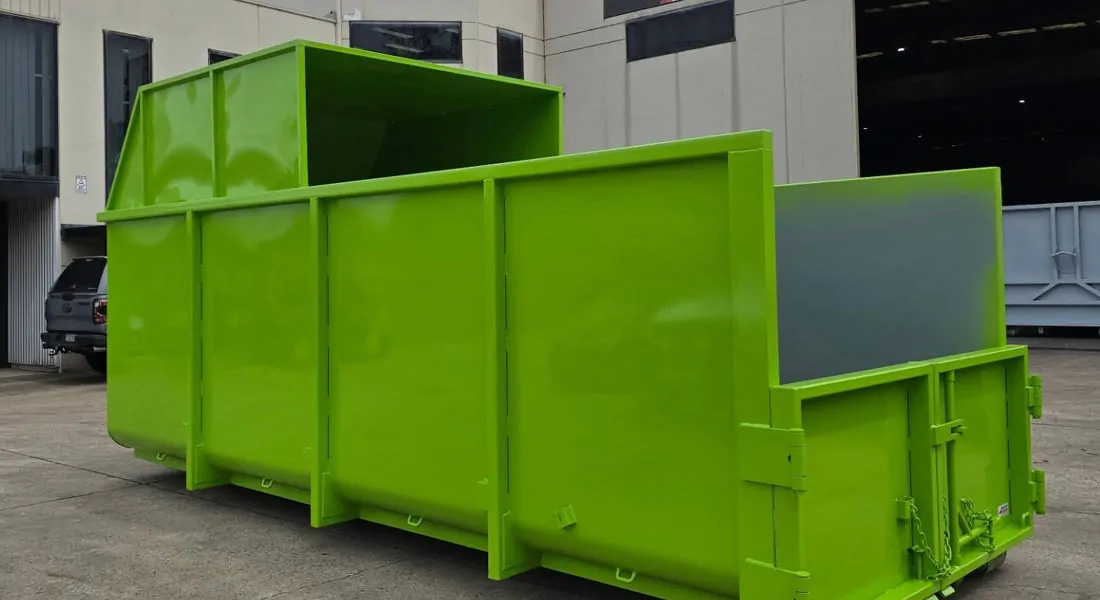When it comes to improving efficiency in waste management and recycling operations, few tools are as effective and versatile as hook lifts. These hydraulic systems are transforming how businesses and councils handle everything from general waste to recyclables, offering a flexible, safer, and more cost-effective solution for transporting heavy bins and containers.
1. Increased Operational Flexibility
One of the standout advantages of using this lifting mechanism is its ability to accommodate a variety of container sizes and types. Whether you’re working with skip bins, flatbeds, or recycling pods, these systems allow for quick swapping between units. This flexibility means fewer trips, less downtime, and more efficient scheduling, which is especially useful for recycling centers and waste management firms dealing with diverse loads daily.
2. Improved Safety for Workers
Handling heavy waste containers manually or using less advanced systems can pose serious safety risks. Lifting injuries, pinched fingers, and equipment-related accidents are not uncommon. With hydraulic lift systems, most of the heavy lifting is automated. Operators can load and unload containers without ever leaving the cab of the vehicle, minimizing physical strain and exposure to hazardous environments. This not only protects the health of workers but also helps reduce liability for employers.
3. Reduced Downtime and Faster Turnaround
Time is critical in the waste and recycling industry. Any delay in pick-up or drop-off affects the entire schedule and, ultimately, customer satisfaction. These systems are designed for speed. Containers can be dropped, picked up, and transported quickly without complicated hook-ups or multiple personnel. This fast turnover makes them ideal for high-volume operations that need to keep trucks moving and clients happy.
4. Cost-Effective Waste Handling
Although the initial investment in vehicles and compatible containers can be significant, the long-term savings are substantial. First, the speed of operation allows businesses to handle more loads in a day, increasing revenue potential. Second, fewer trucks are needed since a single vehicle can service multiple sites with interchangeable containers. Third, the improved fuel efficiency from fewer stops and faster loading further lowers operational costs. Over time, these savings can greatly outweigh the initial expenditure.
5. Environmental Benefits
Reducing the environmental footprint is a major goal in the recycling and waste industries. These lifting systems support this by enabling more efficient route planning and load management, which lowers emissions. In addition, the use of reusable and interchangeable containers means fewer materials are wasted in packaging and transport. Efficient container rotation also helps prevent overfilling or spillage, reducing the chance of litter and environmental contamination.
6. Better Site Management
On construction sites, commercial properties, and municipal recycling facilities, space is often at a premium. Having a system that allows for the quick removal and replacement of containers helps keep operations tidy and organized. Instead of waiting for a skip to be emptied, it can be swiftly swapped out, allowing work to continue without interruption. This constant rotation improves workflow and keeps sites cleaner and safer.
7. Adaptable for Future Needs
As regulations and business needs change, it’s important to have adaptable equipment. These systems are future-proof in that they can be easily integrated into newer trucks or paired with modern, smart waste containers. Many models now include GPS tracking, load sensors, and other technology that supports data-driven waste management. This means businesses can scale their operations without overhauling their entire fleet.
8. Minimal Maintenance Requirements
Compared to other mechanical systems, these hydraulic lifting mechanisms are relatively low-maintenance. Their design emphasizes durability and long service life, especially when regular maintenance is performed. Most of the systems are built with robust components that can withstand daily wear and tear in tough conditions such as landfills, industrial zones, and urban collection points.
Conclusion
The modern waste and recycling industry demands smarter, faster, and safer solutions. Lifting systems that utilize a hydraulic hook mechanism provide all these benefits and more. They improve worker safety, reduce downtime, lower costs, and enhance environmental outcomes—making them an indispensable part of any waste management operation aiming to stay competitive and sustainable. As businesses continue to seek out ways to streamline logistics and boost efficiency, investing in a lifting solution like this is no longer just an option—it’s a necessity.
